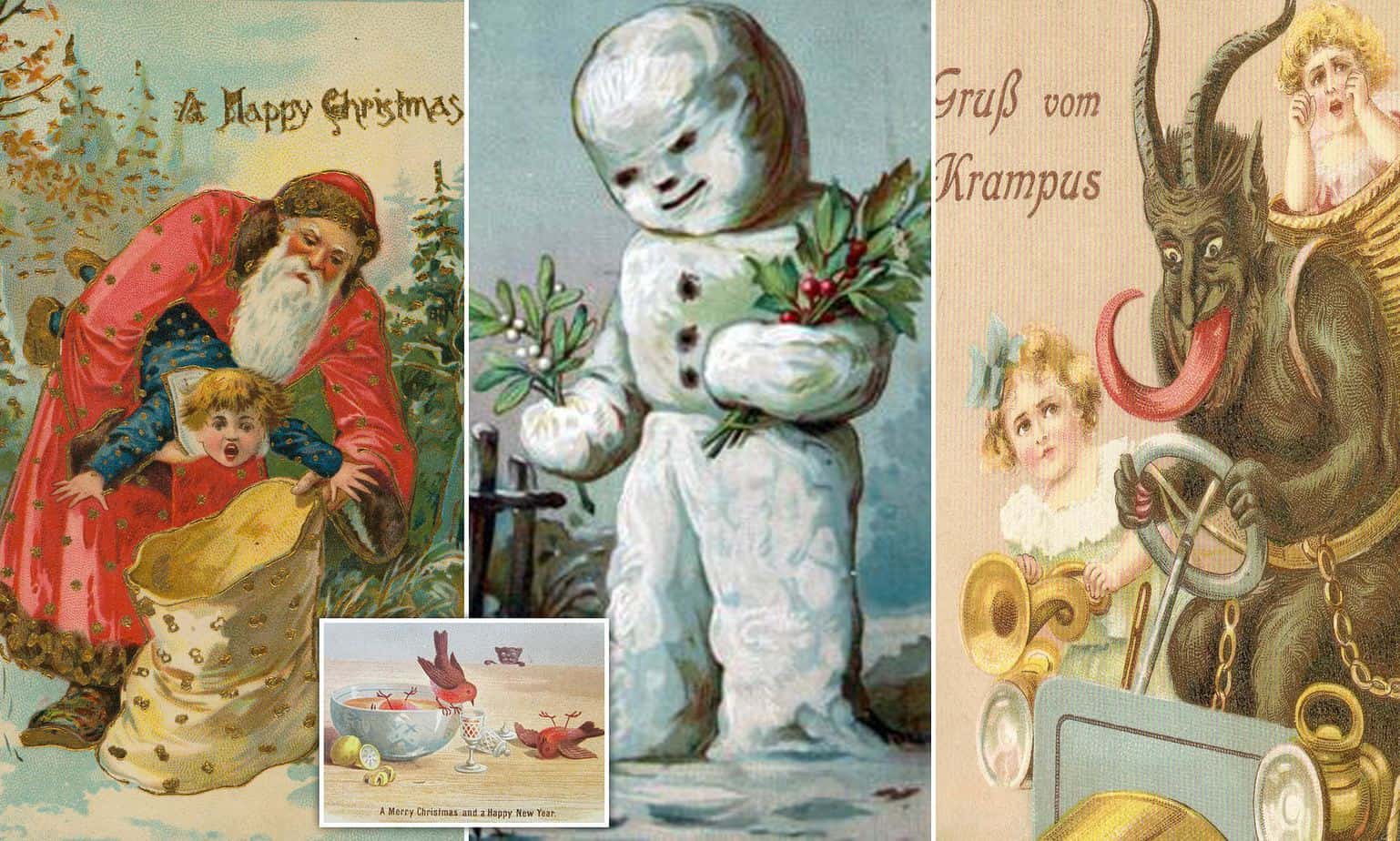
ADVERTISEMENT - CONTINUE READING BELOW
They Sent Downright Creepy Christmas cards
The Victorians, like the Edwardians after them, loved their postcards. Though uniformed postmen had been hitting the streets since 1793, it was with the invention of the adhesive stamp and the introduction of the Uniform Penny Post—a parliamentary act passed in 1840, fixing the price of all postal correspondence at one penny—that Britain went post mad. Writing to wish friends and relatives seasonal greetings around Christmas soon became a popular pastime. But it wasn’t until 1843 that one man, Sir Henry Cole, decided that writing to each person individually was too time-consuming and that a card with a festival image would serve just as well. But unfortunately for Sir Henry, his idea was not well received. The 1,000 Christmas cards that he initially printed weren’t so well received by the British public.
Most people were just apathetic towards them, but not everyone. The depiction of young children enjoying a small glass of wine around the dinner table brought strong opposition in the form of a temperance movement, which argued that the appearance of alcohol on the front of some of them could encourage people to drink. Eventually, the idea caught on. People realized the simplicity of selecting an image, filling in the salutation or, “TO: __________” line, and popping their card in the post. Within a couple of decades, Christmas cards had become the roaring success they are now. And with their popularity came great potential for artists to get creative. As well as the quintessentially Christmassy scenes of nativities, cherubs, and hearty lunches around a glowing table, artists began decorating their cards with a range of utterly insane designs.

